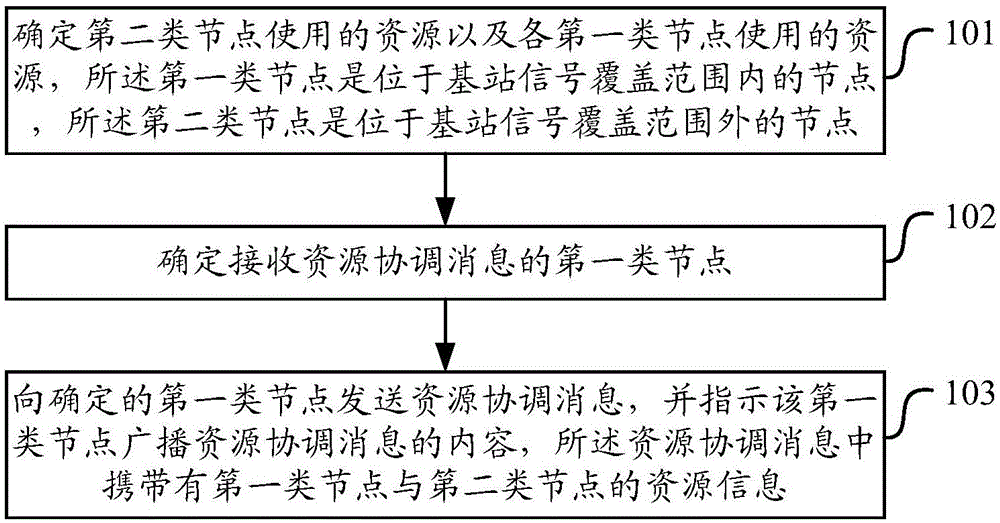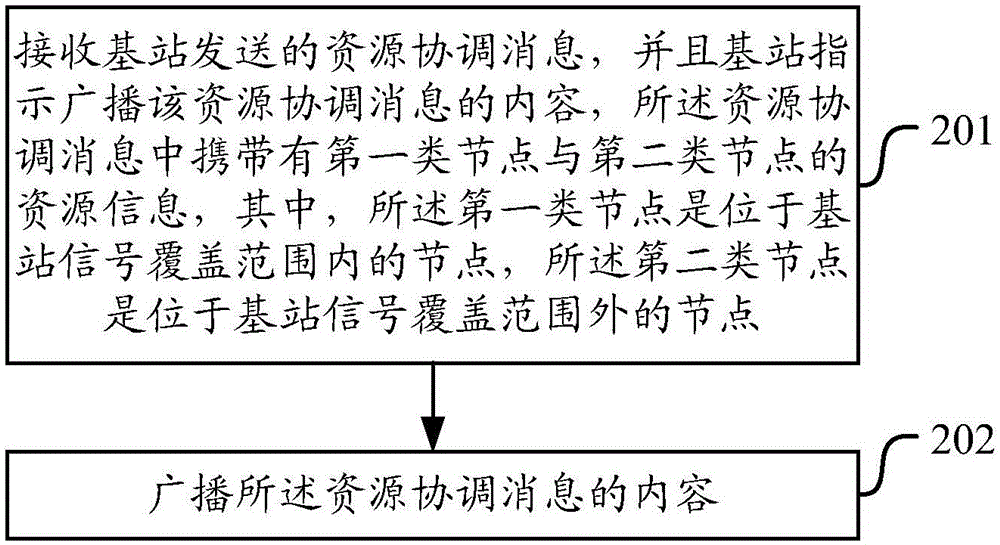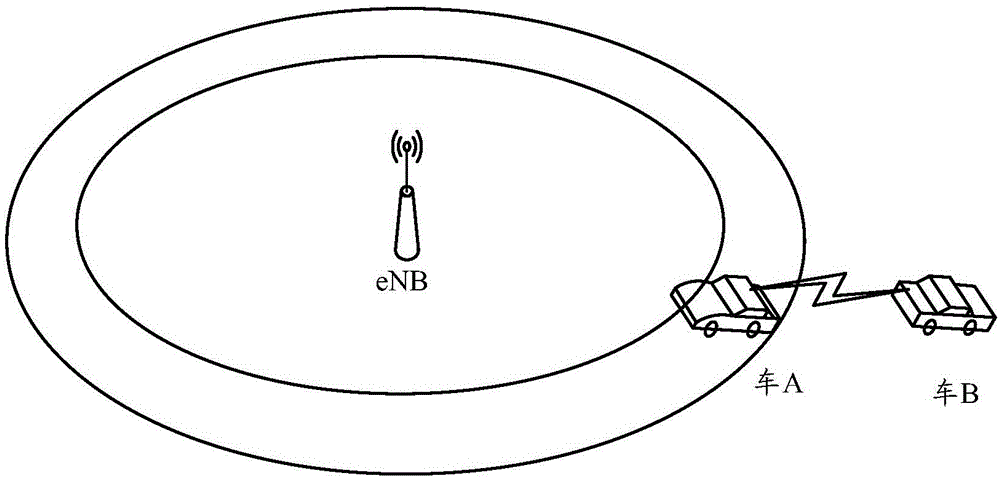Resource information sending and broadcasting method and device
A technology of resource information and transmission method, which is applied in broadcast service distribution, network traffic/resource management, wireless communication, etc., can solve problems such as road safety application interruption, resource collision, etc., and achieve the effect of avoiding information transmission interruption
- Summary
- Abstract
- Description
- Claims
- Application Information
AI Technical Summary
Problems solved by technology
Method used
Image
Examples
Embodiment 1
[0169] Embodiment 1: Resource coordination without resource collision
[0170] image 3 It is a schematic diagram of nodes in and out of coverage without resource collision. As shown in the figure, car A is in the edge area within the coverage of the base station, and car B is outside the coverage of the base station.
[0171] There are 2 possible situations for the car:
[0172] Case 1. Car A continuously sends D2D SS, and does not receive synchronization signals from nodes outside the coverage, and does not need to send resource coordination messages;
[0173] Case 2. Car A can receive the D2D SS sent by car B outside the coverage and needs to send a resource coordination message;
[0174] For case 2 where resource coordination is required, the implementation is as follows:
[0175] step one:
[0176] Car A can receive the D2D SS sent by car B outside the coverage. Since the D2D SS sequence in the eNB coverage is different from that outside the coverage, the car A confirms that the car ...
Embodiment 2
[0190] Embodiment 2: strong interference information requires resource coordination
[0191] Figure 4 A schematic diagram of nodes in and out of coverage reported for strong interference. As shown in the figure, cars A and D are in the edge area of the base station coverage, car C is in the base station coverage, and car B is out of coverage. Among them, car B and car C occupy the same time-frequency resources for transmission, and car D detects that the transmission resources of car B and car C collide. It can be implemented as follows:
[0192] step one:
[0193] Since car A is in the edge area covered by the base station, it needs to continuously send D2D SS. When car A receives the D2D SS sent by car B outside the coverage, because the D2D SS sequence in the eNB coverage is different from that outside the coverage, the car A confirms that the car A is at the edge of the base station coverage and there is the car B outside the coverage node around.
[0194] Specifically, when ...
Embodiment 3
[0216] Embodiment 3: There is strong interference and strong interference information requires resource coordination
[0217] Figure 5 It is a schematic diagram of nodes in and out of coverage without resource collision. As shown in the figure, car A, car D, and car C are in the edge area of the base station coverage, car E is in the base station coverage, and car B and car F are out of coverage. Among them, car B and car C occupy the same time-frequency resources for transmission, and car D detects that the transmission resources of car B and car C collide. Among them, car B and car C occupy the same time-frequency resources for transmission, and car D detects that the transmission resources of car B and car C collide. It can be implemented as follows:
[0218] step one:
[0219] Car A is in the coverage of the base station and continuously sends D2D SS. When car A receives the D2D SS from car B outside the coverage, because the D2D SS sequence in and out of eNB coverage is dif...
PUM
 Login to View More
Login to View More Abstract
Description
Claims
Application Information
 Login to View More
Login to View More - R&D
- Intellectual Property
- Life Sciences
- Materials
- Tech Scout
- Unparalleled Data Quality
- Higher Quality Content
- 60% Fewer Hallucinations
Browse by: Latest US Patents, China's latest patents, Technical Efficacy Thesaurus, Application Domain, Technology Topic, Popular Technical Reports.
© 2025 PatSnap. All rights reserved.Legal|Privacy policy|Modern Slavery Act Transparency Statement|Sitemap|About US| Contact US: help@patsnap.com



